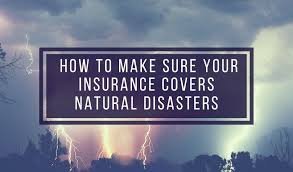
Natural disasters—floods, hurricanes, earthquakes, and wildfires—are striking more frequently and with greater intensity. The big question is: does your insurance policy really protect you when disaster strikes? Many homeowners assume they’re covered, only to discover the fine print says otherwise. Here’s how to make sure you’re protected.
1. Understand What Standard Home Insurance Covers
A standard homeowners insurance policy typically covers:
- Fire and smoke damage
- Windstorms (in some areas)
- Hail, lightning, and certain types of water damage
However, it often does not cover major disasters like floods or earthquakes. This gap leaves many families financially vulnerable after catastrophes.
2. Check for Disaster Exclusions
Most policies have a list of exclusions—specific events that aren’t covered. Common exclusions include:
- Flooding (requires separate flood insurance)
- Earthquakes (needs earthquake insurance add-on)
- Landslides and sinkholes
- Nuclear hazards and war-related damages
Always read your policy carefully or ask your insurer directly about exclusions.
3. Add the Right Riders or Policies
If your area is prone to certain disasters, you may need additional coverage:
- Flood insurance through FEMA’s National Flood Insurance Program (NFIP) or private insurers.
- Earthquake insurance add-ons for seismic-prone zones.
- Wildfire coverage, especially in high-risk states.
- Extended replacement cost coverage to rebuild if construction prices surge after a disaster.
4. Assess Your Risk Based on Location
Your ZIP code matters. Living near a coastline, river, or seismic fault line increases your risk—and may require extra coverage. Tools like FEMA flood maps or state hazard assessments can help you understand your risk better.
5. Keep an Updated Home Inventory
Insurance claims after disasters often require proof of ownership. Create a home inventory by:
- Taking photos or videos of your belongings
- Saving receipts of major purchases
- Storing digital copies in the cloud
This ensures you get reimbursed fairly and quickly.
6. Review and Update Regularly
Your insurance needs may change over time. Review your coverage:
- Once a year during policy renewal
- After home upgrades or renovations
- If you move to a new risk-prone location
Final Thoughts
Insurance is supposed to provide peace of mind, but assuming coverage without checking the details can be costly. Natural disasters are unpredictable, but your financial protection doesn’t have to be.
By reading the fine print, adding the right policies, and staying prepared, you can make sure your insurance actually covers you when nature unleashes its worst.